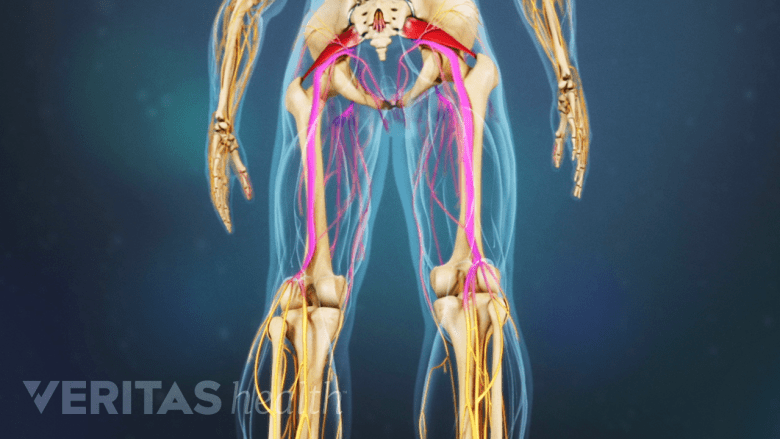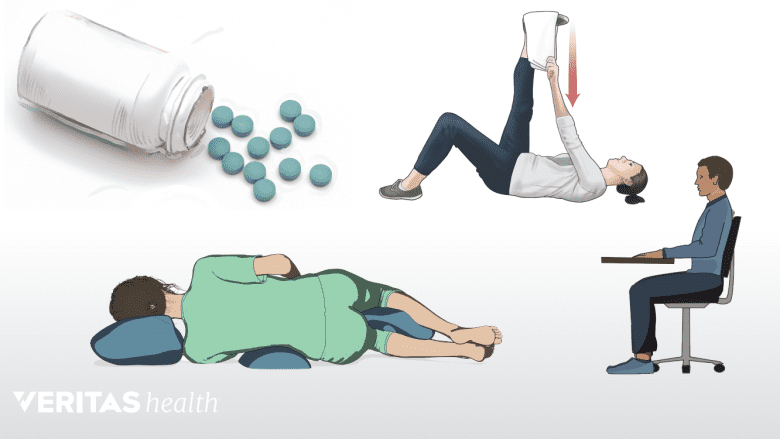Low back pain with referred pain can vary widely with regards to severity and quality. It tends to be achy, dull and migratory (moves around). It tends to come and go and often varies in intensity. It can result from the identical injury or problem that causes simple axial back pain and is often no more serious.
In This Article:
Area of Pain Distribution

Pain in the lower back tends to radiate to the buttocks and thighs.
Referred pain is usually felt in the low back area and tends to radiate into the groin, buttock and upper thigh. The pain often moves around, and rarely radiates below the knee. This type of low back pain is not as common as axial low back pain or radicular pain sciatica.
See What You Need to Know About Sciatica
Referred pain is analogous to the pain that radiates down the left arm during a heart attack. It is the result of the extensive network of interconnecting sensory nerves that supply many of the tissues of the low back, pelvis and thigh.
An injury to any of these structures can cause pain to radiate – or be “referred” - to any of the other structures. It is important to understand that this type of pain is not due to “pinched nerves”.
Diagnosis of Referred Low Back Pain

A thorough medical history is crucial for diagnosing the source of lower back pain.
Unfortunately, the brain cannot determine the specific source of the pain. A careful history and physical exam by an experienced spine specialist can usually distinguish this type of pain from radicular pain, or pain that radiates down the leg along the specific course of a compressed spinal nerve. The distinction between referred pain and radicular pain is critical because the treatment of the two types of pain varies considerably.
Treatment of Referred Low Back Pain

A combination of several nonsurgical treatment methods may help alleviate referred low back pain.
In general, referred pain is treated with the same types of nonsurgical care as axial back pain and will frequently diminish as the low back problem resolves. Once the possibility of a serious underlying medical condition as the cause of a patient’s low back pain is ruled out, treatment of referred low back pain is non-surgical and may include one or a combination of the following:
- A short period of rest (e.g. one or two days)
- Physical therapy, active exercise and stretching
- Ice packs and/or hot pads
- Appropriate medications for pain relief
Read more about Non-Surgical Treatments for Lower Back Pain
If the above treatments do not successfully reduce the patient’s pain to a manageable level, then additional non-surgical treatments may be tried. Laminectomy and discectomy surgery (back surgery aimed at decompressing the spinal nerve sac or individual spinal nerve roots) are often unsuccessful in treating referred pain. For cases of chronic severe low back pain, with or without referred leg pain, further testing and evaluation with discography (injection of the discs to determine if they are the pain generators) may be considered depending upon the treatment options being considered by the treating spinal specialist.

